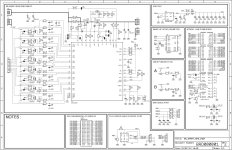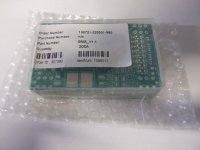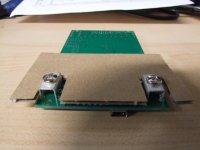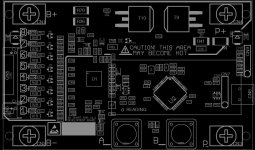dmwahl
10 kW
Which board is that?friendly1uk said:Apart from an lcd display, my $25 board does all this.
Which board is that?friendly1uk said:Apart from an lcd display, my $25 board does all this.
dmwahl said:Which board is that?friendly1uk said:Apart from an lcd display, my $25 board does all this.
Got it, I thought you had made your own.friendly1uk said:dmwahl said:Which board is that?friendly1uk said:Apart from an lcd display, my $25 board does all this.
Smart bms sold by bmsbattery. Perhaps the best thing they sell. Though the pc interface is quite a bite at $100 more, if you need one. I think it's been hacked though if you see little point owning the real thing. You would need to read it's thread http://endless-sphere.com/forums/viewtopic.php?f=14&t=48461&hilit=oz890







circuit said:This looks like a nice chip, and nice BMS.
Have you considered stacking several of these chips for at least 16s battery? Looks quite difficult to stack.
dnmun said:you should avoid bringing B+ back onto the BMS without having fused protection of anything over a few hundred mA. too much risk of very bad things happening if the B+ shorts to anything on the BMS.


I've not tested yet mosfet temperature at 30A because my dynamic load can't sink more than 150W (50V/15A) and i'm not at stage of validations (i'm developing firmware, coulomb counting at this time).dmwahl said:How warm do those big FETs get at 30A?
I doubt you'll have any issues at that power level, I was mostly just curious. I spent the first 5 or so years of my career doing thermal management for single board computers, and it's amazing how many people just look at the datasheet Rth and go with that, not realizing it's totally unrealistic for most designs. Glad to see you're doing it the proper way and actually measuring tempfpie said:I've not tested yet mosfet temperature at 30A because my dynamic load can't sink more than 150W (50V/15A) and i'm not at stage of validations (i'm developing firmware, coulomb counting at this time).dmwahl said:How warm do those big FETs get at 30A?
What i usually do is is a testing board equipped with "special" mosfets and shunt with worse value than real, that allow me to "qualify" behaviour of my design at only a fraction of the full power and do some temperature measurements to deduct Rth of my design.
With the actual NXP PSMN1R7-60 mosfet (2milliohms) , at 30A i roughly dissipate 30x30x0.002 ohms so 1.8 Watts per mosfet and 30x30x0.001 ohms into 0.9W into shunts.
Total of 2 mosfets + shunts, less than 5W, less than 1% if your consider a 8S battery at 30A.
Notice that ISL94203 have two NTC input. One is dedicated to monitor mosfets temperature, it's a feature of ISL94203.
I agree with you on the fusing, but are you concerned about a failure of the ISL part or casual shorts due to something touching B+? There are plenty of points on the board with enough potential to cause damage if shorted. I've not dealt with a lot of the chinese BMSes so I'm not too familiar with what they're doing.dnmun said:you do not need battery voltage on the BMS. it is a fuse in the negative lead. do not bring the B+ output to the BMS which is at ground.
if you need power to run the BMS from the top of the pack then use a lead that is fused at the B+ terminal to allow no more then the 100mA you need to run your electronics. same with the charging lead, use a fused lead from the B+ terminal to the + lead from your charger.
this is an indication of poor design and is always a fail on the chinese low quality BMS. you do not want your design to be tainted by the same poor practice.
circuit said:I am still dreaming about stacking these, so was looking around schematics. Source of T8 (discharge fet) is connected to output. So, if two of these chips are stacked, some pins of upper chip will be driven 2x below it's power supply.
Is it compatible with such voltage swings?
dnmun said:the major fires i have seen with lifepo4 packs was due to the charging lead running though the BMS housing. the risk is in the large currents that can flow on the main positive conductor if it is shorted to the source legs of the output mosfets so there is no way to stop the current and that leads to the overheating and fire.
i see it often on the very cheapest BMSs because they find it cheaper to leave off the one top sense wire so they bring B+ back to the BMS and use it for the top of the pack sense wire. they do the same with the B0 sense wire and use the B- or ground lead as the B0 sense wire. both cases add the current induced deltaV to the sense wire detection voltage.
fusing that lead helps and it doesn't need to be a large conductor to carry enuff current to run your circuit.
